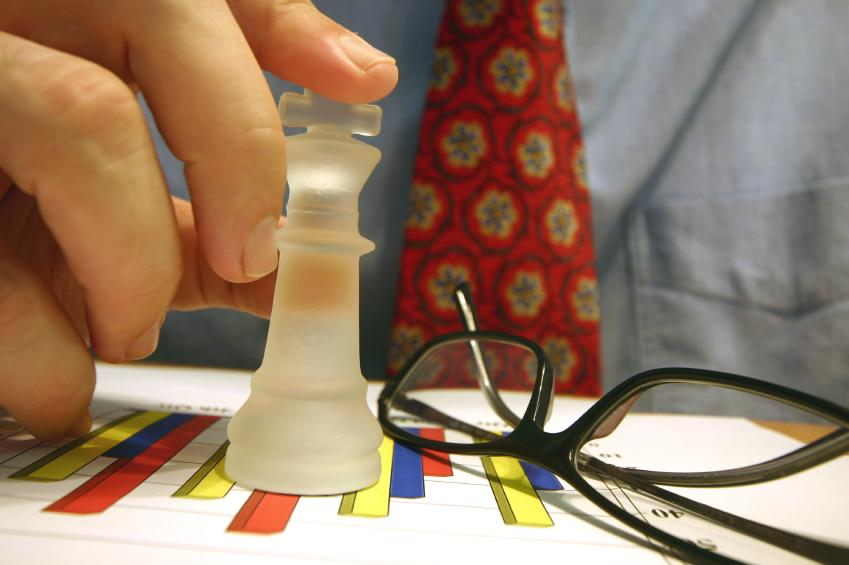Robert W. Yokl, Vice President/COO, SVAH Solutions
Not that we want to add any more complexity or responsibilities to our busy supply value analysis programs, but one category of purchasing is becoming ever more present in our new and existing contract negotiations and that is the use of green products and services. Let’s face it, hospitals consume a ton of products that are not kind to our environment and create a major amount of waste. Who better to deal with the complexities of the cost, quality, and outcome relationship than the value analysis teams when it comes to green products and services?
There are many paths that this article could take but I thought it would be best to bring in a few experts who have first-hand knowledge of performing green value analysis to give us all some insight.
Why is Green Value Analysis Important Today?
 Colleen Cusick, DNP, MBA, RN, CMRP, Director of Materials Management, The John’s Hopkins Hospital – Green value analysis is important since the healthcare supply chain is able to make a visible sustainable impact for our patients, our staff, our hospitals, our local neighborhood, and the wider community. It is an issue of health and safety. Healthcare value analysis professionals can make a difference by promoting sustainable efforts. These efforts can be recommending a reduction in packaging, and eliminating or reducing products that potentially cause an increase in the bioburden of our patients and staff members. They can also make recommendations for sustainable changes but help to ensure that the changes result in products that are clinically acceptable. And it is not just working for more sustainable products, it is looking at logistics of procuring products. It is looking at the total cost of ownership: does the product have batteries to be disposed of or can the item be recycled or can the item be reprocessed?
Colleen Cusick, DNP, MBA, RN, CMRP, Director of Materials Management, The John’s Hopkins Hospital – Green value analysis is important since the healthcare supply chain is able to make a visible sustainable impact for our patients, our staff, our hospitals, our local neighborhood, and the wider community. It is an issue of health and safety. Healthcare value analysis professionals can make a difference by promoting sustainable efforts. These efforts can be recommending a reduction in packaging, and eliminating or reducing products that potentially cause an increase in the bioburden of our patients and staff members. They can also make recommendations for sustainable changes but help to ensure that the changes result in products that are clinically acceptable. And it is not just working for more sustainable products, it is looking at logistics of procuring products. It is looking at the total cost of ownership: does the product have batteries to be disposed of or can the item be recycled or can the item be reprocessed?
Value analysis professionals are positioned to evaluate manufacturers in regard to the manufacturers’ commitments to produce sustainable products. They also give voice from staff and patients to manufacturers of what may need to be changed. The VA staff hear what their clinical colleagues want and what patients want. Some patients do let their concerns be known. So, there are many ways for the value analysis process to be green.
 John Strong, President, Greenhealth Exchange – Green value analysis is extremely important for a variety of reasons. In general, I don’t believe that green and sustainable products should cost any more than brown ones, but there are notable exceptions. Take clean, organic, locally, and sustainably grown produce. It usually costs more to produce, for a wide variety of valid reasons. Health care providers should take the lead in this space by using these products versus canned or frozen goods because they can teach patients that fresh products are generally available, have far lower levels of sodium than canned goods, and taste better—all leading to a better, healthier lifestyle for their patients, especially over time. If hospitals in the U.S. are truly concerned about community health, they need to seize opportunities to lead in this area by showing patients how to live healthier lifestyles—not just treat their illnesses when the patients present themselves in the E.R.
John Strong, President, Greenhealth Exchange – Green value analysis is extremely important for a variety of reasons. In general, I don’t believe that green and sustainable products should cost any more than brown ones, but there are notable exceptions. Take clean, organic, locally, and sustainably grown produce. It usually costs more to produce, for a wide variety of valid reasons. Health care providers should take the lead in this space by using these products versus canned or frozen goods because they can teach patients that fresh products are generally available, have far lower levels of sodium than canned goods, and taste better—all leading to a better, healthier lifestyle for their patients, especially over time. If hospitals in the U.S. are truly concerned about community health, they need to seize opportunities to lead in this area by showing patients how to live healthier lifestyles—not just treat their illnesses when the patients present themselves in the E.R.
 Alan Weintraub, Chief Supply Officer & Director of Support Services, Enloe Medical Center – While we do look at green opportunities, I don’t believe in segregating or considering a green initiative any differently than any other. I think too often “green” is used as a marketing tool. I prefer looking at the total cost equation of an initiative and letting it stand on its own merits. Tangible benefits of any type should be represented in the equation.
Alan Weintraub, Chief Supply Officer & Director of Support Services, Enloe Medical Center – While we do look at green opportunities, I don’t believe in segregating or considering a green initiative any differently than any other. I think too often “green” is used as a marketing tool. I prefer looking at the total cost equation of an initiative and letting it stand on its own merits. Tangible benefits of any type should be represented in the equation.
One of the biggest challenges that we face today is whether we can save money with green initiatives. If we can, they will enter our contract negotiations, bids, and value analysis agendas more often. But, are there other ways to be green other than just buying green products and services? The answer is of course there are and the number one area that is overlooked is just using less products or consuming less. But how do we get there?
If you take notice to Alan Weintraub’s answer above, he does not change his purchasing and value analysis process to cater to any green initiative but does consider them if they are a valued alternative. I have worked with and observed Enloe Medical Center’s supply chain purchasing over the past 10 years now and have found that the key to their being green is that they have a strong value analysis, standardization, and utilization management program in place. The effect of this is that Enloe is using about 20% to 30% less SKUs than any other hospital in our database (over 300 hospitals & health systems) in size comparisons to volume, spend ratios, and characteristics. The end result, or should I say ongoing results, are that Enloe is creating a natural “green effect” by using fewer products with less variation.
Can You Save Money and Still be Green/Sustainable in the Healthcare Supply Chain World?
 John Strong – The key reason that nine leading health systems across the United States formed the Greenhealth Exchange is because no one group has focused on aggregating the volume of truly green and sustainable products to force brown products off the shelf, and bring the price of green products down for everyone through longer production runs, greater institutional and consumer demand, and particularly innovation of better and safer products.
John Strong – The key reason that nine leading health systems across the United States formed the Greenhealth Exchange is because no one group has focused on aggregating the volume of truly green and sustainable products to force brown products off the shelf, and bring the price of green products down for everyone through longer production runs, greater institutional and consumer demand, and particularly innovation of better and safer products.
GX has spent the last year working with a major distributor of office products, and we have completely and carefully vetted in a “product formulary” their traditionally purchased office products. Generally, the contract has saved them up to 10% in aggregate on their purchases, and they have all raised their green purchases in this category from less than 30% to more than 60%. This is exactly the kind of results we want to achieve each time.
A new contract GX is just launching for a major product line will universally save our owners and members money, but only IF they change their behavior and convert to the cleaner, greener alternatives that we have placed on contract.
All of the analysis and product vetting is hard work, takes a lot of time, and costs a lot of money. That’s why healthcare needs a leader in this space—to take a meaningful focus on real value analysis to secure the best available product for the best price. That’s where the collective value analysis judgement of GX, our experts, and our owners come in. We will come back to these products and work hand-in-hand with our manufacturers to further improve the products and reduce the costs of each contract cycle. Product development is not static and harnessing collective purchasing power is the only way to make a lasting difference.
 Colleen Cusick – Yes, you can save money and still be green. Sometimes green products may cost less. But, some of the savings may be realized by a reduction in logistics costs by recommending standardization. The value analysis professional can assist by analyzing utilization rates and asking, are we buying the right amount? We can help with supply waste issues.
Colleen Cusick – Yes, you can save money and still be green. Sometimes green products may cost less. But, some of the savings may be realized by a reduction in logistics costs by recommending standardization. The value analysis professional can assist by analyzing utilization rates and asking, are we buying the right amount? We can help with supply waste issues.
However, sometimes saving money or being cost neutral can be difficult. Sometimes, you have to make difficult decisions to not make a sustainable change in one area due to increased costs that cannot be supported at that time.
Sometimes, the sustainable products available are not clinically acceptable and should not be considered. The value analysis team can help make these decisions.
Some sustainable product costs have decreased over time. This trend will likely continue as consumers and health care professionals demand safer and more sustainable products.
There are Many Different Ways to be Green
There are many ways to be green at your healthcare organization, but what is most important is that you start to consider how you should include green products and services in your value analysis programs and what end results you want to have happen. Remember, there are many ways to be successful, from engaging your group purchasing organization in having green products, creating green value analysis teams, or utilization/consumptions programs for your hospital and/or health system. Sustainability is not going away any time in the future, so it is up to us as value analysis and supply chain leaders how we want to be successful for our organizations.





